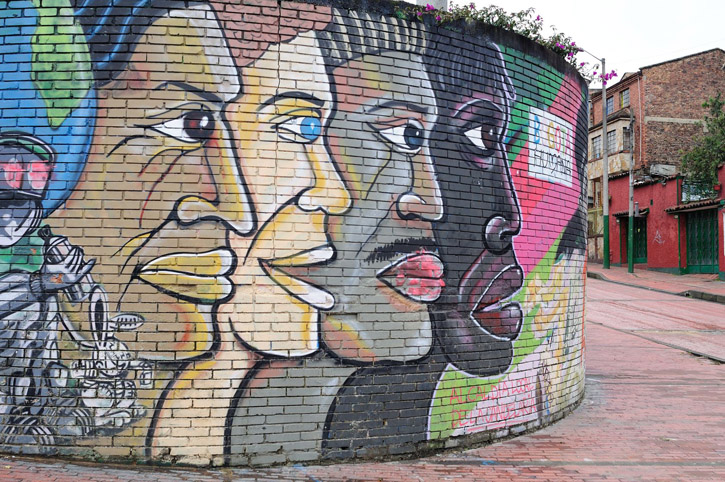Colombia was estimated to have had a population of a little over 47 million in 2013 and has the third highest population in Latin America, behind Brazil and Mexico and slightly higher than Argentina. Around four million Colombians live outside of Colombia, mostly in the United States, Venezuela, Spain, and Ecuador. The population growth rate has fallen significantly in the past two decades and is now 1.1 percent. The population of the country is relatively young, with a median age of 28.6 years. Average life expectancy is 75 years.
In the Americas, Colombia has the third highest number of citizens of African origin, behind Brazil and the United States.Sixty percent of the Colombian population lives in the highland Andean interior of the country, where the three largest cities are located: Bogotá (7.7 million), Medellín (3.4 million), and Cali (3.1 million).It is increasingly an urban country, with around 75 percent of the population living in urban areas. This trend began during La Violencia and accelerated in the 1970s and 1980s. At least 3.9 million persons have been internally displaced due to the armed conflict in Colombia, leaving their homes in rural areas and seeking safety and economic opportunity in large cities.
Most of the population (over 86 percent) is either mestizo (having both Amerindian and white ancestry) or white. People of African (10.4 percent) and indigenous or Amerindian (over 3.4 percent) origin make up the rest of the Colombian population. There is a tiny Romani or Roma population of well under 1 percent of the population, but nonetheless they are a protected group in the constitution.

This Bogotá street art in La Candelaria illustrates Colombia’s multicultural nature. Photo © Carlos Mora/123rf.
There are more than 80 indigenous groups, with some of the largest being the Wayúu, who make up the majority in the La Guajira department; the Nasa, from Cauca; the Emberá, who live in the isolated jungles of the Chocó department, and the Pastos, in Nariño. Departments in the Amazon region have the highest percentages of indigenous residents. In Vaupés, for example, 66 percent of the population is of indigenous background. Many indigenous people live on resguardos, areas that are collectively owned and administered by the communities.
Afro-Colombians, descendants of slaves who arrived primarily via Spanish slave trade centers in the Caribbean, mostly live along both Pacific and Caribbean coasts and in the San Andrés Archipelago. Chocó has the highest percentage of Afro-Colombians (83 percent), followed by San Andrés and Providencia (57 percent), Bolívar (28 percent), Valle del Cauca (22 percent), and Cauca (22 percent). Cali, Cartagena, and Buenaventura have particularly large Afro-Colombian populations. In the Americas, Colombia has the third highest number of citizens of African origin, behind Brazil and the United States.
While Colombia has not attracted large numbers of immigrants, there have been periods in which the country opened its doors to newcomers. In the early 20th century, immigrants from the Middle East, specifically from Lebanon, Syria, and Palestine arrived, settling mostly along the Caribbean Coast, especially in the cities of Barranquilla, Santa Marta, Cartagena, and Maicao in La Guajira. From 1920 to 1950, a sizable number of Sephardic and Ashkenazi Jews immigrated. Colombia has not had a large immigration from Asia, although in the early 20th century there was a small immigration of Japanese to the Cali area.
Excerpted from the First Edition of Moon Colombia.